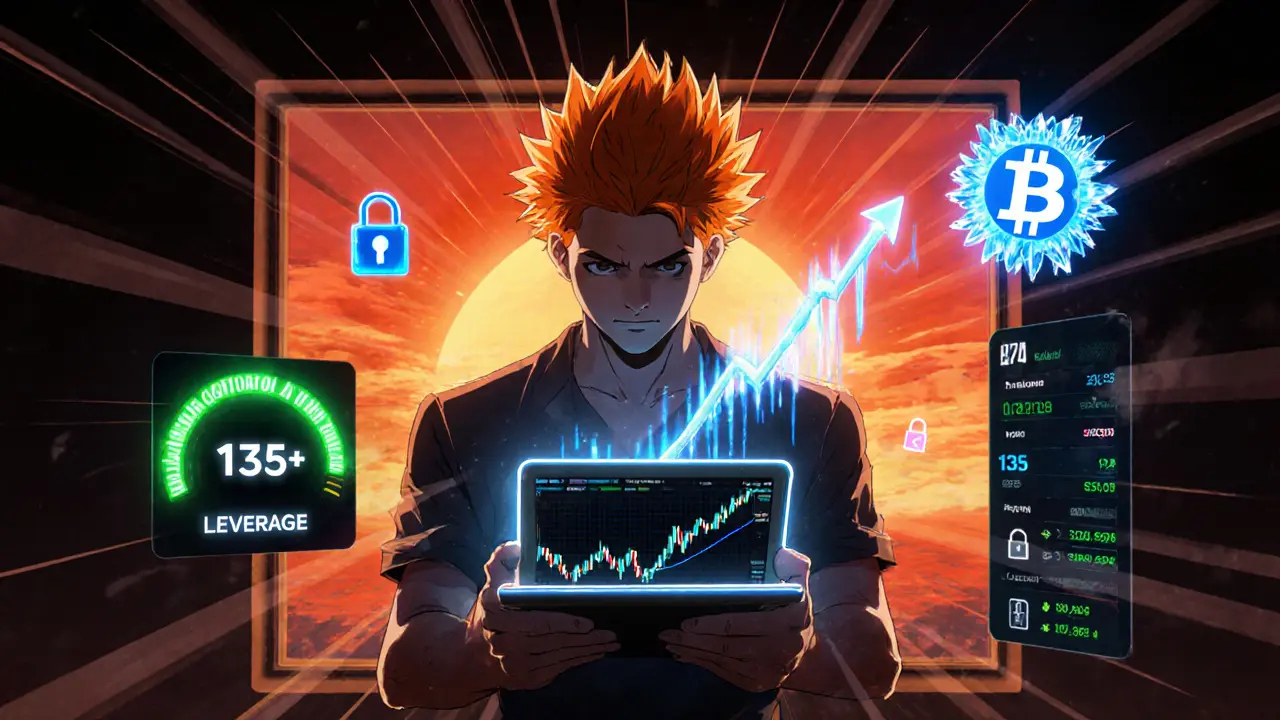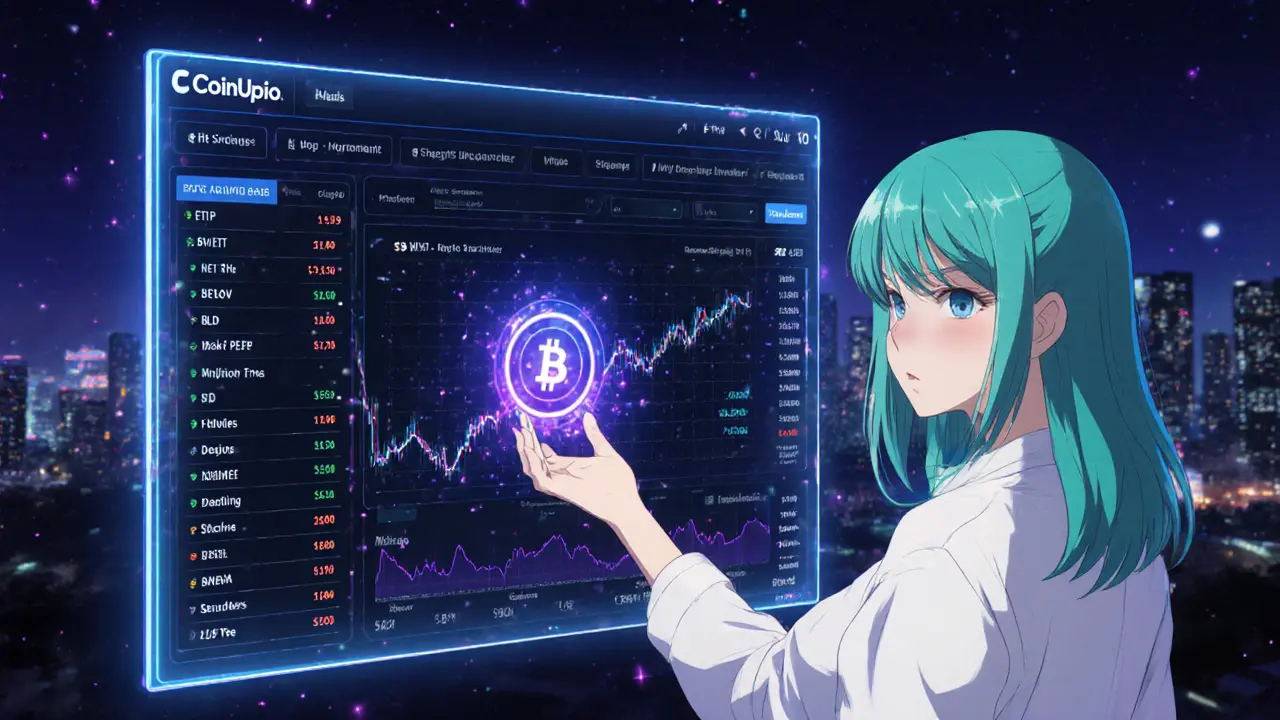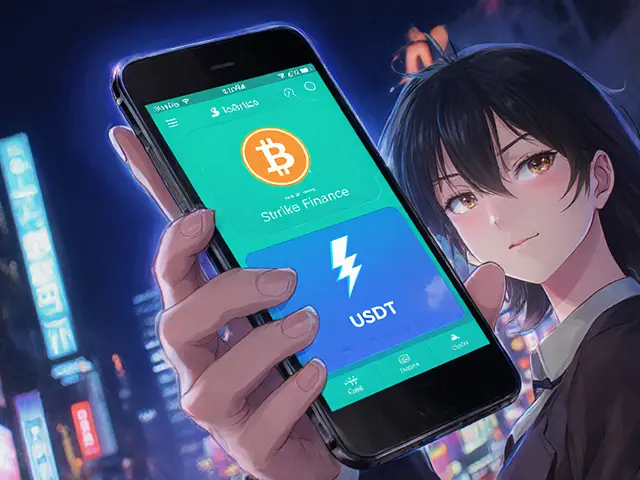CoinUp.io Futures Profit/Loss Calculator
This tool helps estimate potential profits or losses when trading leveraged futures on CoinUp.io.
When you’re hunting for a place to trade crypto derivatives, the flood of exchanges can feel overwhelming. CoinUp.io review cuts through the noise by looking at the platform’s core strengths, weak points, and how it stacks up against the big names you’ve probably heard of.
What is CoinUp.io?
CoinUp.io is a cryptocurrency exchange founded in September 2021 in Silicon Valley and registered in the Cayman Islands. It offers spot trading, margin and derivatives trading, as well as digital asset issuance and management. The platform touts a 24‑hour trading volume of $6.53billion and holds roughly 4,511BTC in its reserve wallets. Operational hubs sit in Singapore, Canada and Hong Kong, and the service claims 24/7 customer support.
Key Features & Product Offering
- More than 300 crypto pairs, covering top coins like Bitcoin (BTC), Ethereum (ETH), and newer assets such as WorldCoin (WLD) and PEPE.
- Both spot trading and leveraged derivatives up to 125× on selected assets.
- Mobile apps for iOS and Android with real‑time charts, portfolio tracking, and push notifications for promotions.
- Low‑fee schedule - 0.05% maker fee and 0.10% taker fee on spot, 0.02%‑0.07% on futures (depending on contract).
- Dedicated risk‑control engine that automatically reduces positions during extreme market moves.
Fee Structure Compared to the Competition
| Exchange | Spot Maker | Spot Taker | Derivatives Max Leverage | Supported Tokens |
|---|---|---|---|---|
| CoinUp.io | 0.05% | 0.10% | 125× | 300+ |
| Binance | 0.10% | 0.10% | 125× | 350+ |
| Gate.io | 0.20% | 0.20% | 100× | 1,400+ |
| Coinbase | 0.00% (maker) | 0.50%‑0.60% | 5× | 250+ |
| Kraken | 0.00%‑0.16% | 0.16%‑0.26% | 5× | 200+ |
Security & Regulatory Landscape
Security is a make‑or‑break factor for any exchange. CoinUp.io markets itself as "one of the safest cryptocurrency exchanges globally," but the public documentation is thin. The platform mentions:
- Two‑factor authentication (2FA) for login and withdrawals.
- Cold‑storage of the majority of user funds - the 4,511BTC reserve is reportedly kept offline.
- Continuous risk monitoring via a proprietary engine.
What’s missing are third‑party audit reports, insurance coverage details, or clear licensing information. In contrast, Binance publishes its audit results, and Coinbase holds a full U.S. money‑transmitter license.
For users in heavily regulated jurisdictions (U.S., EU, Japan), the lack of a transparent compliance framework should be a red flag. If you’re trading modest amounts and are comfortable with the risk, the low fees may still make CoinUp.io appealing, but larger institutional players will likely demand clearer regulatory status.

User Experience - Interface, Mobile App, and Support
The web UI is clean, with a dark‑mode toggle and a unified dashboard that shows spot, futures, and your portfolio on one screen. Beginner traders have praised the intuitive layout, while advanced users appreciate the depth charts and order‑book heat maps.
Mobile apps mirror the desktop experience and send push alerts for price spikes, airdrops, and promotional campaigns. Ratings on the iOS App Store and Google Play are not publicly disclosed in the data we have, but user forums note the app feels responsive and lightweight.
Customer support is reachable via live chat, email ([email protected]), and a Telegram community that’s active 24/7. Response times average under two minutes for chat, though the quality of answers can vary.
Pros & Cons - Quick Takeaway
- Pros
- Very competitive spot and futures fees.
- Wide selection of over 300 tokens, including newer projects.
- High‑leverage derivatives up to 125× for seasoned traders.
- Modern UI that works well on desktop and mobile.
- Cons
- Regulatory and audit transparency is limited.
- Market‑share and user‑base numbers aren’t independently verified.
- Liquidity can dip on less‑traded pairs compared to Binance or Coinbase.
- Customer‑support answers sometimes lack depth for complex issues.
Who Should Consider CoinUp.io?
If you’re a trader who values low fees and wants access to high‑leverage crypto futures, CoinUp.io is worth a test run. It’s also a decent option for users who like a single platform that bundles spot, margin, and a handful of token‑issuance services.
However, if you need iron‑clad regulatory protection, large‑scale institutional deposits, or you’re based in a jurisdiction with strict licensing requirements, you might look at more established exchanges like Kraken or Coinbase.
Bottom Line
CoinUp.io offers a solid, fee‑friendly suite of trading tools that can attract both hobbyist traders and seasoned futures aficionados. The platform’s rapid growth since 2021 shows promise, but the lack of clear regulatory licensing and third‑party security audits means you should approach with caution-especially if you’re moving large sums. Start with a modest deposit, test the withdrawal process, and keep an eye on any updates to the exchange’s compliance roadmap.
Frequently Asked Questions
Is CoinUp.io regulated in the United States?
CoinUp.io does not publicly disclose a U.S. money‑transmitter license or registration with the SEC. Users in the U.S. should treat the platform as an offshore service and consider the regulatory risks.
What is the minimum deposit to start trading on CoinUp.io?
The platform allows a minimum deposit of $10 for spot trading and $50 for futures accounts, making it accessible for small‑scale traders.
How does CoinUp.io’s leverage compare to other exchanges?
CoinUp.io offers up to 125× leverage on select futures contracts, which matches the maximum leverage available on Binance and exceeds the 5‑10× typical on Coinbase and Kraken.
Are withdrawals instant?
Withdrawals are processed within 30‑60 minutes for most major coins, but network congestion can cause longer delays, especially for low‑liquidity tokens.
Does CoinUp.io have an insurance fund?
The exchange states it maintains a “risk reserve” for margin positions, but no public insurance policy or third‑party coverage details are available.
Can I trade NFTs on CoinUp.io?
No. CoinUp.io focuses on spot, futures, and margin trading of cryptocurrencies. NFT marketplaces are not part of its current offering.







Comments
Carl Robertson
January 21, 2025 AT 01:57 AMThose “super‑low” 0.05% maker fees look tempting, but the fact that CoinUp keeps its audit reports hidden feels like a magician refusing to show the tricks.
Rajini N
January 28, 2025 AT 20:37 PMWhen you’re weighing a new exchange, start by testing the withdrawal pipeline with a tiny amount-maybe $20. Verify the address whitelisting, the 2FA prompt, and the actual time it takes for the blockchain to confirm. If the funds land in your wallet within the promised 30‑60 minutes, you’ve cleared the first hurdle. Next, compare the effective spread on your favorite pair against a benchmark like Binance; sometimes low fees are offset by wider spreads. Finally, keep an eye on the support response; a quick chat reply can save you a lot of hassle later.
Oreoluwa Towoju
February 5, 2025 AT 15:17 PMThe mobile app feels snappy, and the push alerts actually help catch sudden moves without overloading.
Jason Brittin
February 13, 2025 AT 09:57 AMWow, 125× leverage? That’s like handing a kid a bazooka and saying “have fun”. 😆 Still, the UI looks clean enough to not get lost in the chaos.
Amie Wilensky
February 21, 2025 AT 04:37 AMIndeed; the platform’s sleek design-smooth gradients, intuitive tabs-might lull users into a false sense of security. Yet, without transparent audits, the elegance is merely cosmetic, a pretty facade masking potential risks.
Clint Barnett
February 28, 2025 AT 23:17 PMLet’s break this down piece by piece, because the devil is in the details and the details are a wild tapestry of promises and caveats. First, the fee schedule: 0.05% maker and 0.10% taker on spot is undeniably competitive, especially when you stack it against Coinbase’s 0.50%‑0.60% taker rates. Second, the leverage offering of up to 125× puts CoinUp in the same league as Binance, which can be intoxicating for high‑risk traders seeking that extra edge. Third, the exchange boasts over 300 trading pairs, which sounds impressive until you realize many of those are low‑liquidity alts that can suffer slippage. Fourth, the cold‑storage of 4,511 BTC sounds reassuring, but without third‑party attestation, it’s a claim that sits on a shaky premise. Fifth, the risk‑control engine that auto‑reduces positions is a nice safety net, yet its exact algorithm remains a mystery, leaving traders guessing when it will intervene. Sixth, the support response time of under two minutes for live chat is a bright spot, though the depth of answers can vary wildly. Seventh, the mobile app’s performance is smooth, with real‑time charts that load quickly, a boon for on‑the‑go monitoring. Eighth, the lack of a clear licensing regime means regulators in the US and EU might view the exchange with suspicion, potentially restricting access for institutional players. Ninth, the minimum deposit thresholds of $10 for spot and $50 for futures lower the entry barrier, democratizing access for small‑scale traders. Tenth, the withdrawal window of 30‑60 minutes aligns with industry standards, provided network congestion is manageable. Eleventh, the platform’s promotional campaigns-airdrop alerts and discount codes-can be enticing but also distract from core due diligence. Twelfth, the community presence on Telegram offers a real‑time pulse but can also amplify hype cycles. Thirteenth, the UI’s dark‑mode toggle is a nice aesthetic touch that reduces eye strain during late‑night sessions. Fourteenth, the absence of an insurance fund leaves margin traders exposed to liquidation bust‑outs without recourse. Fifteenth, the overall brand positioning of “one of the safest exchanges” feels more marketing than measurable fact. Sixteenth, in sum, the exchange delivers a blend of attractive fees and high leverage, but the opaque regulatory posture and missing audit transparency compel any prudent user to proceed with caution and start small.
Jacob Anderson
March 8, 2025 AT 17:57 PMSure, the fees look good-but it’s a toss‑up whether the safety net is even there.
Kate Nicholls
March 16, 2025 AT 12:37 PMWhen you chase low fees without solid custodial guarantees, you’re basically paying for a cheap seat on a roller‑coaster you can’t see the tracks of.
MD Razu
March 24, 2025 AT 07:17 AMOne could argue that the exchange’s rapid growth since 2021 signals market confidence, yet the silence on licensing invites speculation about hidden compliance gaps that may surface under regulatory pressure.
Charles Banks Jr.
April 1, 2025 AT 01:57 AMIt’s like buying a sleek sports car without checking whether the brakes have been tested; looks fast, but you could end up in a ditch.
Ben Dwyer
April 8, 2025 AT 20:37 PMStart with a nominal deposit, run a withdrawal, and monitor the support chat for clarity. If the process feels smooth, you’ve earned a small trust token. If anything feels vague, consider diversifying your exposure. Patience and incremental testing are your allies in this space. Keep records of timestamps for future reference.
Lindsay Miller
April 16, 2025 AT 15:17 PMEven if you’re drawn to the low costs, remember that security is a habit, not a one‑time checkbox. Regularly update your 2FA device and keep most of your holdings in a personal hardware wallet.
Katrinka Scribner
April 24, 2025 AT 09:57 AMTotally agree! 🙌 Keeping most of the crypto in a hardware wallet is the way to go. 😊 Plus, setting up 2FA on both email and app adds that extra layer of safety.
Kate Roberge
May 2, 2025 AT 04:37 AMSure, but let’s not pretend that “extra layer” means you’re invincible; a determined attacker can still find a way if the exchange itself is a black box.
VICKIE MALBRUE
May 9, 2025 AT 23:17 PMGood vibes everyone keep learning and stay safe
Waynne Kilian
May 17, 2025 AT 17:57 PMIts nice to see folks sharing optimism but i think we also need to keep an eye on real data and not just hype. The lack of public audits is a big red flag for me, especially when you see a lot of new tokens listed without clear vetting. i guess time will tell if they can maintain trust.
Naomi Snelling
May 25, 2025 AT 12:37 PMAll this talk about audits is just part of the mainstream narrative. In reality, every exchange is under the thumb of the global shadow network that pulls the strings. If you trust any regulator, you’re already compromised.
Michael Wilkinson
June 2, 2025 AT 07:17 AMWhile speculation runs wild, the practical advice remains simple: start small, verify withdrawals, and keep your core holdings off‑exchange where possible.